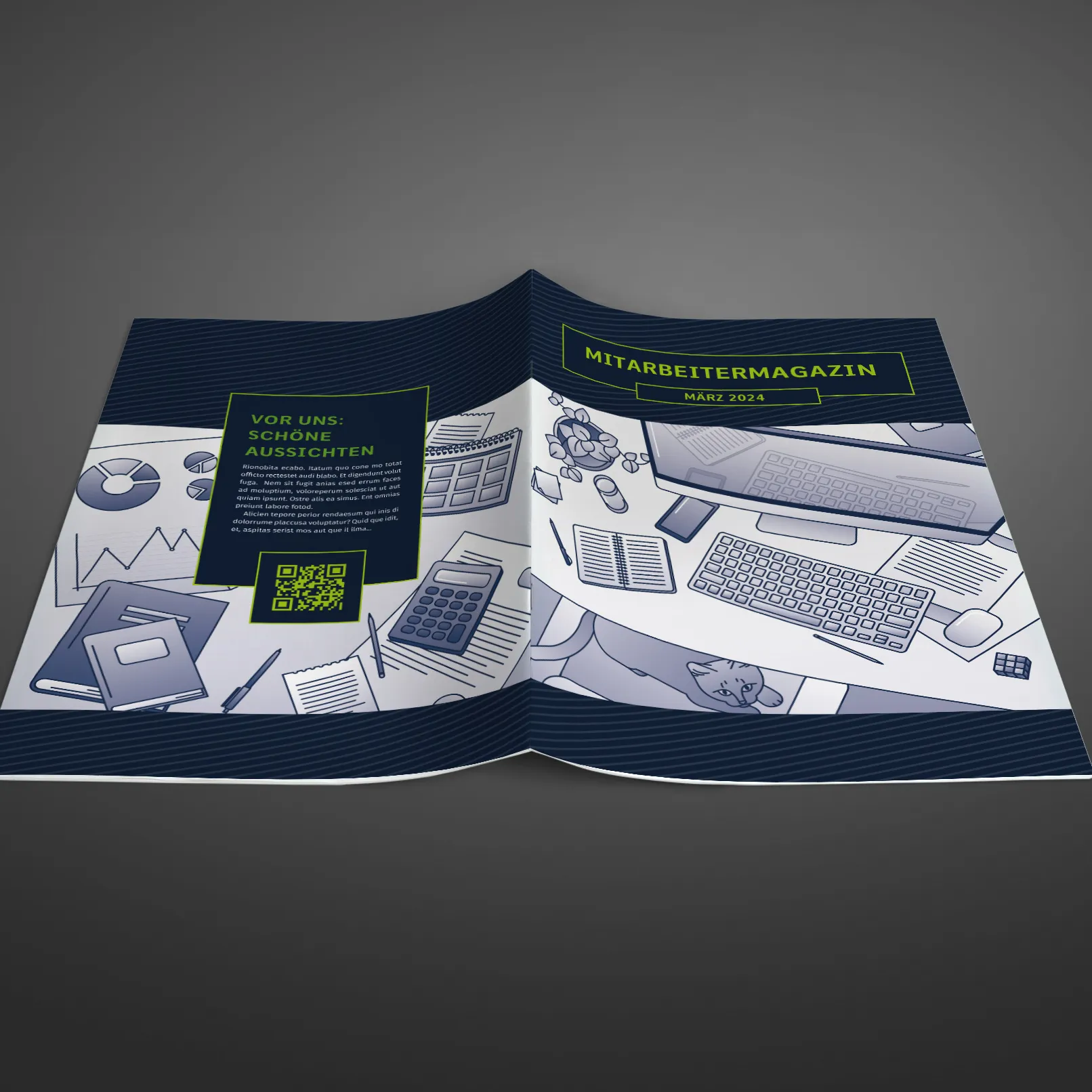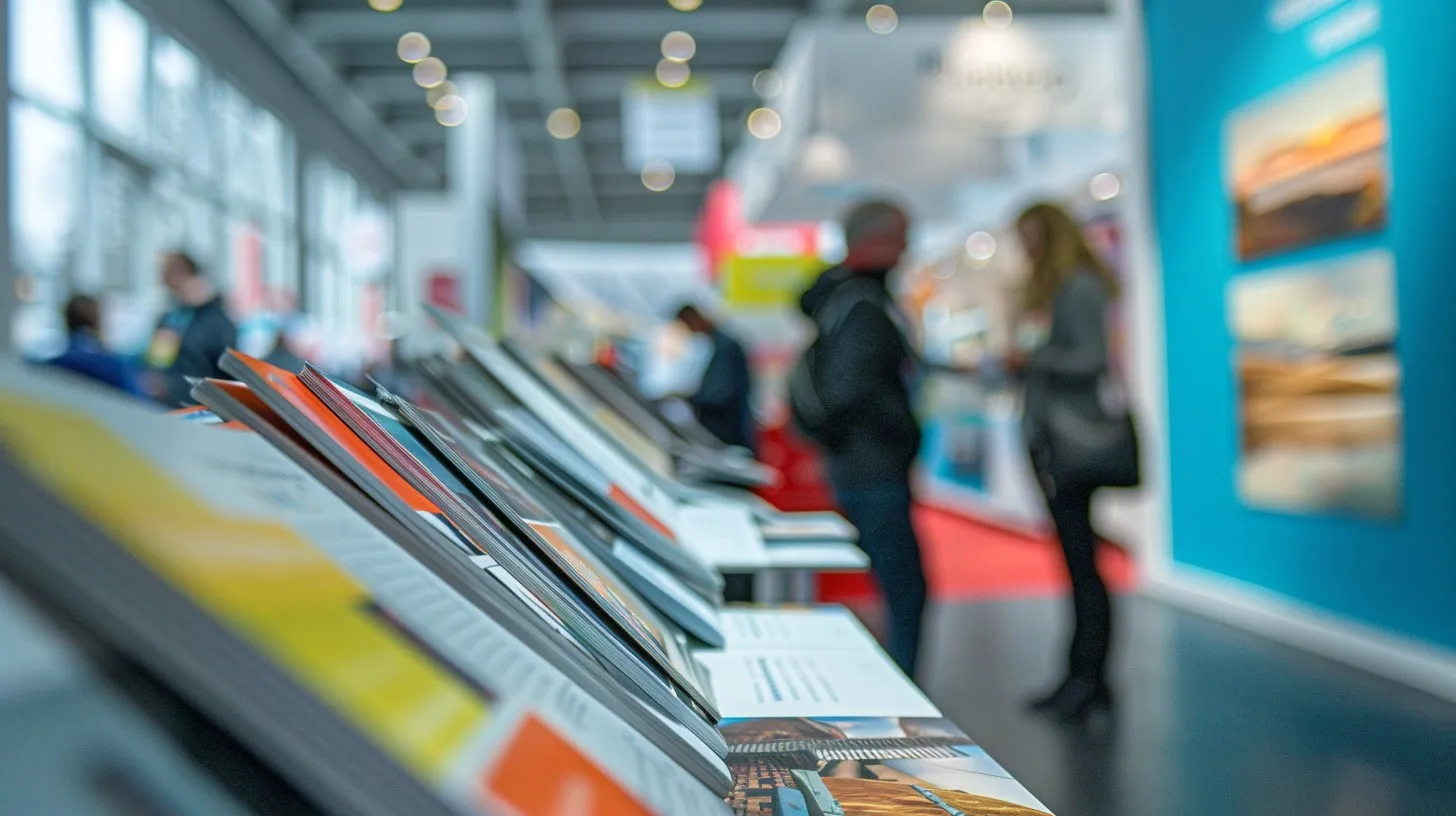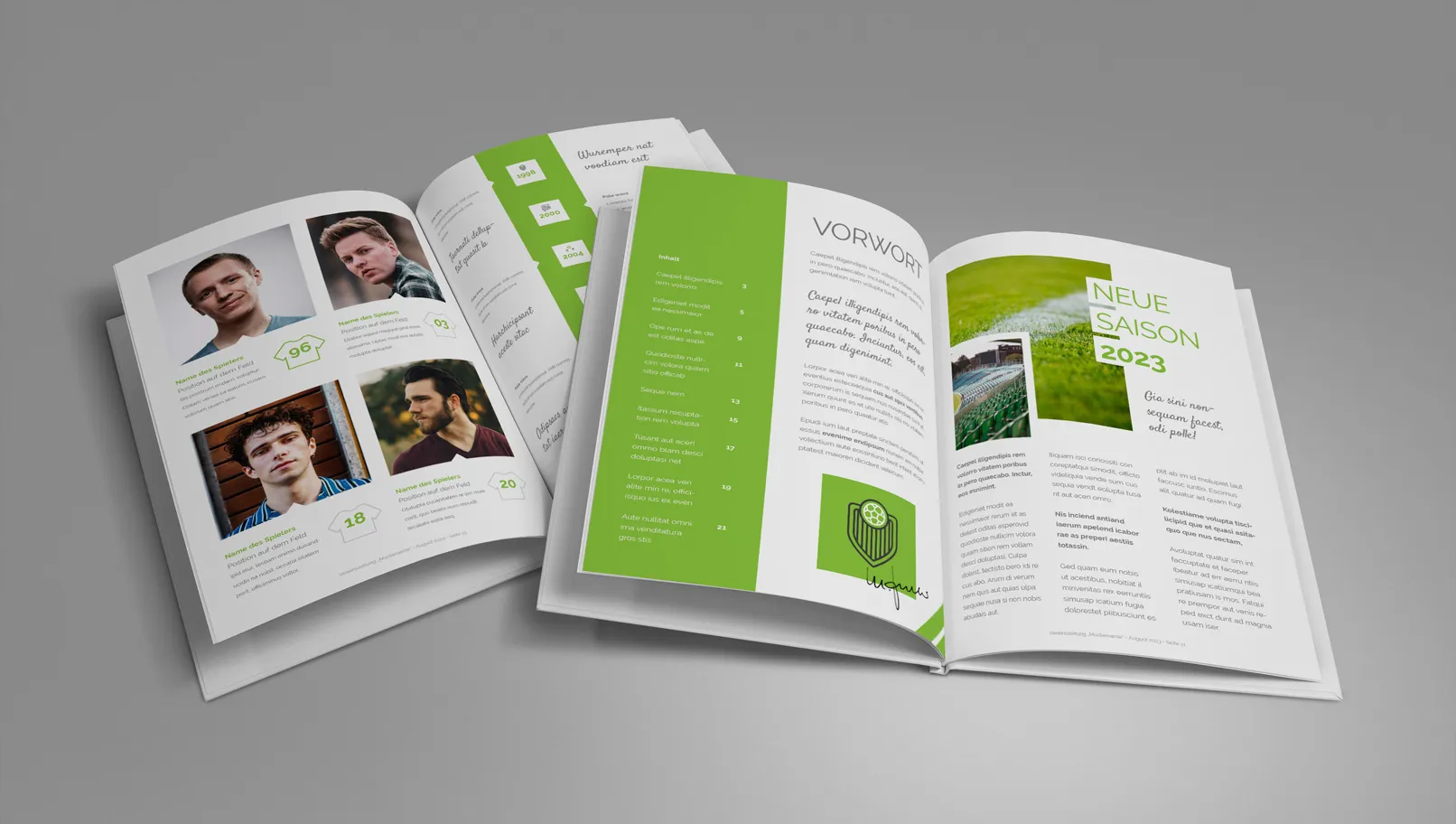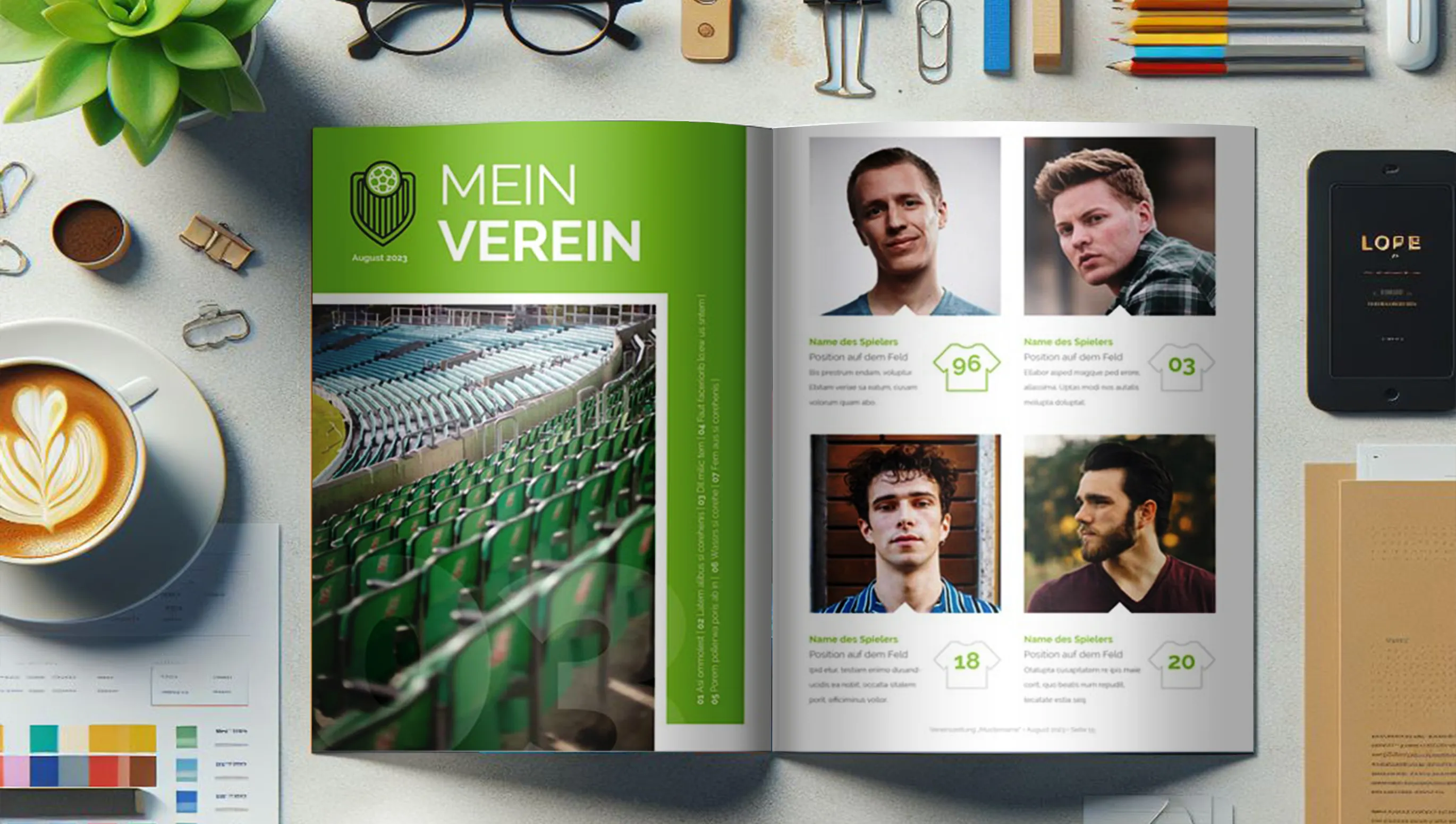One of the factors that influence business in any industry is the extremely high level of competition in the market. Every market player strives to find effective ways to attract the attention of their target audience. When it comes to print products, brochures are still important in marketing strategies. Brochures have a strong potential to attract customers, they are effective for communicating with consumers and can play a role in increasing awareness of a company's products, services and other offerings. The importance of brochures in modern marketing lies in finding the best strategies for their use to achieve maximum results. In this article, I will show you the possibilities of brochures in corporate marketing and the ability to create them efficiently and quickly without putting in excessive effort and resources. This can be a decisive factor for your business success in the face of tough competition from other companies.
Table of Contents
Getting to know the brochure templates
A brochure is a marketing material, a printed document that usually consists of several pages and is folded into two or more parts. The main purpose of a brochure is to convey information about a product, service, event or organization and to attract the interest and attention of the target audience. This type of marketing material is often used for distribution at trade shows, conferences, offices, educational institutions and other places where potential customers or visitors interested in the topic can be found. There are also internal brochures such as employee magazines, but also brochures with an external impact such as image brochures or exposés.

Key features of the brochures include:
Compactness: brochures are usually small, so they can be easily transported and distributed to a large audience.
Informative: They have enough space to convey important information about a product, service or important event.
Visually appealing: the graphic design of brochures can be colorful and eye-catching, which helps to draw attention and memorize the information contained.
The difference between a brochure, a booklet, a leaflet and a flyer
All successful entrepreneurs know that marketing materials are used depending on the objective. We must also consider the products (or services) we are promoting and the target audience we want to reach. Among the available advertising materials, brochures, leaflets and flyers are very well known. Each of these types of promotional materials has its own characteristics, functions and uses, which makes them unique tools in the hands of marketers and entrepreneurs. Let's take a look at their main differences and talk about their use in marketing campaigns.
Characteristics of booklets
A booklet is a compact marketing material that usually consists of several pages. Its main characteristics are:
- Compactness and portability, making it easy to distribute.
- The content can be detailed and varied and helps to deepen the topic.
- Graphic design, which can be colorful and eye-catching depending on the objectives of the marketing campaign.
Features of leaflets
A leaflet is a small sheet of paper or cardboard that can be printed on both sides and is used to disseminate information about products, services or events. The most important features of flyers are:
- Conciseness and brevity, allowing the most important messages to be conveyed in the smallest possible space.
- Simple design that focuses on the main message without many additional details.
- Wide range of applications, from advertising campaigns to event invitations.
Functions and applications of flyers
A flyer is a one or two-sided sheet of paper that usually contains a short message or advertisement. Its main purpose is to
- To draw attention to a specific product, service or event;
- to disseminate information quickly and efficiently to a large number of people, e.g. by distributing it on the street, to passers-by or in retail outlets.
Comparison with brochures
Booklets, leaflets and flyers differ from brochures in that they are more concise and contain less information. In contrast, brochures offer more space to cover a topic in detail and convey more information. Brochures usually have many pages, while flyers are single-sided or folded. Brochures, on the other hand, have a staple binding for the pages.

Who uses brochures?
For almost two centuries, brochures have been used for marketing strategies by industries and organizations that want to communicate effectively with their target audiences. Here are some examples of areas and industries where brochures are particularly important:
- Tourism and hospitality: travel agencies, hotels, resorts and tourist attractions use brochures to attract customers and showcase their services. Brochures can include information about itineraries, hotel rooms, restaurants and activities at the resort.
- Educational institutions: Universities, colleges, schools and training centers use brochures to promote their degree programs and courses. They may include information about the institution's accreditation, faculties, study programs and achievements and accomplishments.
- Medical institutions: Hospitals, clinics, dental offices and other healthcare facilities use brochures to inform patients about services, procedures, healthcare programs and health tips.
- Financial institutions: Banks, insurance companies and mutual funds use brochures to promote their financial products and services. The brochures contain information about different types of loans, insurance policies, investment plans and other financial services.
- Technology companies: IT companies, software developers and electronics manufacturers that operate on the Internet also actively use brochures to promote their products and services. They describe product specifications, feature overviews and advantages over the competition at open forums, trade fairs and hackathons.

Important aspects when designing and printing brochures
Many people, especially those who are new to design, do not pay attention to the technical aspects of designing brochures and preparing them for printing. Yet these are very important points that significantly influence the end result. Here are the most important details you should always keep in mind:
- Standard formats: Most brochures are designed and printed in the following formats. A4 (210 x 297 mm) is the standard for information and educational brochures, A5 (148 x 210 mm) for promotional events and (99 x 210 mm) for mailers and inserts. It is possible to use landscape format for brochures as well as portrait format. Square formats such as 210 x 210 mm can also be used for stylish and creative events.
- Paper type: The quality of a brochure depends largely on the paper on which it is printed. The thicker the paper, the less likely it is to crease during use. Heavy paper with a grammage of 150-300 g/m² can represent a premium value. If you are interested in a large print run or frequent updates, you can choose a paper with a weight of 90-150 g/m². You can choose thicker paper for the outside of the brochure and thinner paper for the inside pages. This will give the brochure a high-quality look. Paper with a high cotton content is considered high-quality paper.
- Print quality: To ensure that the images and text on your brochures are clear, you need to choose the right type of printing. In offset printing, images and colors are printed in high quality. Offset printing uses a special cylinder to transfer the ink from the photo film (or photo plate) onto the drum and then onto the paper. It is used for large print runs. With the digital process, you can print small and medium runs of brochures in high quality. It is ideal for personalized projects or short runs. The quality depends on the type of printer, but modern digital devices can deliver a very high level of detail and color accuracy. Mesh printing is used on special materials such as textiles or plastics and is designed for high quality and durability if such a substrate is chosen. And finally, screen printing. It is suitable for various surfaces, e.g. paper, cardboard, plastic, etc. It has a high image quality and allows the use of different inks.
- Design and layout: It is best if your brochure combines functionality and maximum attractiveness. It is better to use professional brochure layout software, such as Adobe InDesign. This will help you to create a professional and clean layout. It is also important that you include margins (bleed) for trimming and pressing so that you do not lose any important information when printing and preparing the brochure for distribution.
- Finishing: Designing and printing a brochure is only one part of the process, albeit an important one. No less important is the finishing, which includes laminating, foiling and embossing, for example, which can significantly enhance the brochure's appeal and increase its recognition value. This is all done by the print shop as part of the finishing of the printed product.
Each stage of this work contributes to making the brochure a high-quality and effective advertising medium.

Did you know that leaflets reached their peak in the middle of the 20th century when they were used as an important tool for mass information, education and propaganda. During the Second World War, leaflets were an integral part of information campaigns, spreading important messages to boost morale and inform citizens about military activities. During this time, pamphlets also served as an important educational tool, providing access to knowledge as access to books and other educational resources was limited. Companies used brochures to market their products and services, allowing them to reach a wide audience quickly and effectively. Over time, despite the development of digital technologies, brochures have still retained their importance in certain sectors, especially tourism and exhibitions.
Use ready-made, professional templates to create brochures
Using ready-made templates for brochure layout has numerous advantages that simplify and speed up the process. They offer a professional design developed by experienced professionals, allowing you to create high-quality and aesthetically pleasing brochures. They also save time and money as there is no need to create the design from scratch or hire qualified professionals. Using high-quality templates also helps standardize the information and look of brochures, so you can create a consistent style and look across all company materials.
The TutKit.com portal offers a wide range of ready-made brochure templates developed by professional designers from the well-known agency 4eck Media. Our layouts are of high quality and originality, which guarantees their effectiveness in attracting attention and increasing the audience. We offer both individual brochure templates and complete packages that include several brochure options, allowing you to create a corporate identity for your company even without design knowledge. When you choose templates from TutKit.com, you can be sure that they are of high quality and meet modern market requirements and standards.

